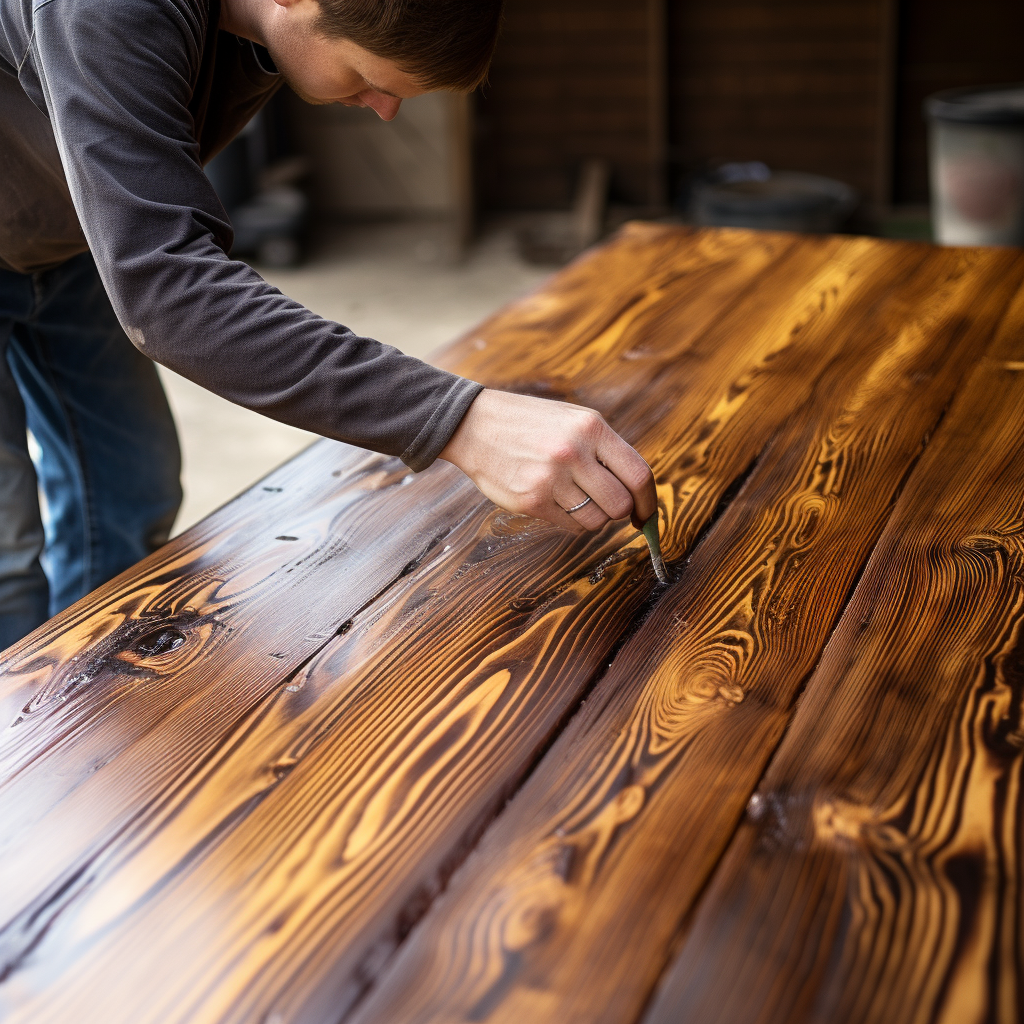If you’re wondering how long does linseed oil last on wood, then this is the right post for you.
Well, it’s not a simple ‘one-size-fits-all’ answer. Various factors can influence its durability, and different wood types can also affect longevity.
We’ll help you understand when your wood needs a fresh coat, and share maintenance tips to extend the oil’s life.
So, let’s delve into the nitty-gritty of how long linseed oil really lasts on wood.
Key Takeaways
- The quality and processing methods of linseed oil affect its durability on wood.
- Different types of linseed oil have varying lifespans on wood, with boiled linseed oil lasting longer than raw linseed oil.
- The type of wood also plays a role in the longevity of linseed oil, with hardwoods allowing the oil to last longer compared to softwoods.
- Signs that wood needs a fresh coat of linseed oil include dullness, cracking, roughness, and water absorption. Regular maintenance and care can extend the life of linseed oil on wood.
Understanding the Lifespan of Linseed Oil on Wood
Linseed Oil, which is rich in omega fatty acids, creates a robust, water-repellent finish.
Yet, its lifespan isn’t infinite. It’s vital to apply it correctly to ensure its longevity.
Start with a clean, dry surface. Apply a thin layer evenly, let it soak, then wipe away excess oil. Reapply annually for best results.
Remember, environmental factors can also influence its longevity. So, keep an eye out for signs of wear and reapply as necessary.
With attentive application and care, linseed oil can preserve your wood for years.
Factors That Influence the Durability of Linseed Oil
Interestingly, you’ll find that both the quality of the linseed oil and the conditions of its application greatly influence its durability. Here’s how:
- Oil Types Comparison: Not all linseeds are created equal. The purity and processing methods affect the oil’s longevity. Boiled linseed oil, for instance, lasts longer than raw.
- Application Method: How you apply the oil also matters. A thin, even layer will yield better results than a thick, uneven one.
- Exposure: The more exposure to harsh elements, the more frequently you’ll need to reapply the oil.
- Climate Impact: In humid climates, linseed oil may not last as long, as the moisture can affect its adherence to the wood.
Variations in Linseed Oil Longevity on Different Wood Types
You’ll notice that the longevity of linseed oil can vary significantly depending on the type of wood it’s applied to. This is due to differing oil absorption rates and wood oil compatibility.
Hardwoods, with their dense grain, absorb oil slowly, allowing linseed oil to last longer. Conversely, softwoods absorb oil quickly, which can shorten the oil’s lifespan.
The compatibility between the oil and the wood also matters. Some woods have natural oils that can interfere with linseed oil’s absorption, reducing its efficacy and longevity. It’s crucial to understand these variations to make informed decisions about wood treatment.
Signs Your Wood Needs a Fresh Coat of Linseed Oil
Surprisingly, if your wood starts to look dull and loses its shine, or even starts to show signs of cracking, it’s high time to apply a fresh coat of linseed oil. Here’s how to tell:
- Dullness: Linseed oil gives wood a glossy finish. If it’s gone dull, reapply.
- Cracking: Oil prevents wood from drying out and cracking. If cracks appear, it’s time for a touch up.
- Roughness: If the surface feels rough to the touch, it’s a clear sign.
- Absorption: Your wood is thirsty if it’s absorbing water.
Use correct oil application techniques when you reapply. If you’re not a fan of linseed, there are linseed oil alternatives like tung oil, mineral oil, or walnut oil to consider.
Maintenance Tips to Extend the Life of Linseed Oil on Wood
By regularly dusting off and cleaning your wood, you’re helping to extend the life of the linseed oil applied on it. It’s not just about maintaining cleanliness, but also about preserving the oil’s protective layer.
Proper oil application techniques can also make a difference. Try applying thin coats of linseed oil, allowing each layer to fully absorb before adding another. This method helps to maximize coverage and penetration, enhancing the oil’s longevity.
If you find that linseed oil isn’t giving you the durability you desire, don’t shy away from exploring linseed oil alternatives. Tung oil or Danish oil could potentially offer better resistance to wear and tear.


Leave a Reply